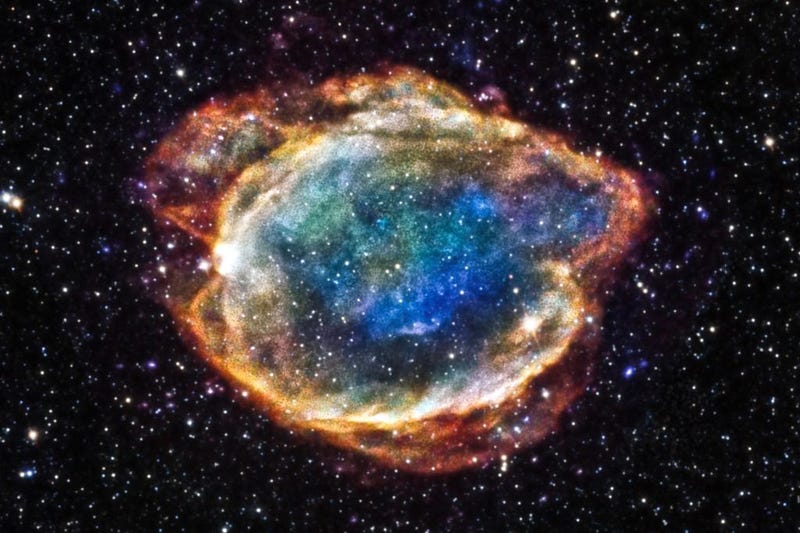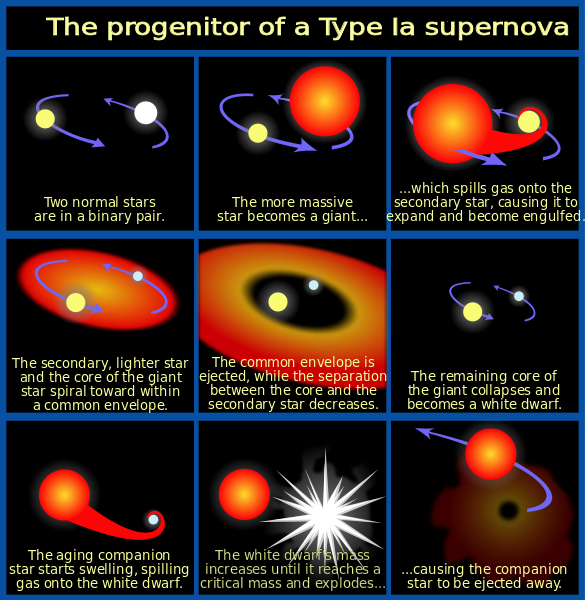Exploring the Mysteries of White Dwarf Supernovae
Written on
Chapter 1: Unraveling White Dwarf Explosions
Recent astronomical observations have shed light on the puzzling nature of white dwarf star explosions. A brief burst of ultraviolet radiation observed during one such event has provided fresh clues regarding the mechanisms behind these stellar phenomena. This marks only the second occasion astronomers have detected such an ultraviolet flash during a white dwarf explosion.
The revelation of this ultraviolet light may lead researchers closer to understanding the formation of heavy elements, like iron, as well as one of the universe's profound enigmas — dark energy.

“The ultraviolet flash reveals critical insights into the dynamics of this white dwarf's explosion,” stated Adam Miller, an astrophysicist from Northwestern University who spearheaded the study. “As the debris disperses over time, it allows us to probe deeper into the explosion's core.”
Section 1.1: The Discovery of SN2019yvq
In December 2019, astronomers at California's Zwicky Transient Facility (ZTF) identified a supernova designated SN2019yvq. Analyzing the data confirmed it as a type Ia supernova, a relatively common class of explosion among white dwarfs. This event occurred approximately 140 million light-years from Earth, situated near the constellation Draco's tail.

“These explosions are among the most frequent in the universe. What distinguishes this event is the ultraviolet flash, which astronomers have sought for years without success. To our knowledge, this is only the second instance of observing such a flash alongside a type Ia supernova,” Miller elaborated. The presence of ultraviolet light typically indicates processes occurring at temperatures significantly higher than that of the Sun's surface. The flash was visible for several days, suggesting a highly energetic event was responsible for it.

Section 1.2: Theories Behind Ultraviolet Flashes
Despite the expectation that white dwarfs cool over time, these sudden bursts of ultraviolet light pose a conundrum for researchers. Several hypotheses exist regarding why these stars occasionally emit such flashes before exploding.
- In binary star systems, one star may siphon material from its companion until reaching a critical mass, leading to an explosion. The expelled material might collide with the partner star, generating the ultraviolet flash.
- Another theory suggests that radioactive elements in the white dwarf's core could mix with the outer layers, elevating the surface temperature enough to emit ultraviolet radiation.
- A third possibility is that helium ignites thermonuclear reactions in the carbon within the star, resulting in a double explosion that produces the ultraviolet flash.
- Finally, the flash might originate from material ejected during the collision of two white dwarfs.
Chapter 2: The Cosmic Significance of Type Ia Supernovae
Most of the universe's iron originates from type Ia supernovae, some of which contribute to the formation of planets, including Earth's core. By gaining insights into these explosions, astronomers aim to unlock the secrets of our planet's formation.
Type Ia supernovae are known to explode with a consistent brightness. By observing their apparent brightness from Earth, scientists can calculate distances to far-off galaxies. Furthermore, analyzing the Doppler shift of light from these galaxies enables astronomers to determine the universe's expansion velocity. A clearer understanding of the mechanisms driving these explosions may lead to deeper insights into the dark energy propelling the universe's expansion.
“Most galaxies are receding from us. If we observe a type Ia supernova in a distant galaxy, we can measure a combination of distance and velocity, allowing us to assess the universe's acceleration. While dark energy remains elusive, these supernovae represent our best avenue for probing its nature,” Miller noted.
In billions of years, our Sun will transition into a white dwarf, though it will not undergo the explosive fate observed in recent astronomical events. Once the region surrounding the star clears, the remnants will offer researchers an unparalleled opportunity to investigate the dynamics of white dwarf explosions, further enriching our understanding of the cosmos.
James Maynard is the founder and publisher of The Cosmic Companion. He has transitioned from a New England native to a desert dweller in Tucson, where he resides with his wife, Nicole, and their cat, Max.
Did you enjoy this article? Join us at The Cosmic Companion Network for our podcast, weekly video series, informative newsletter, news briefings on Amazon Alexa, and more!